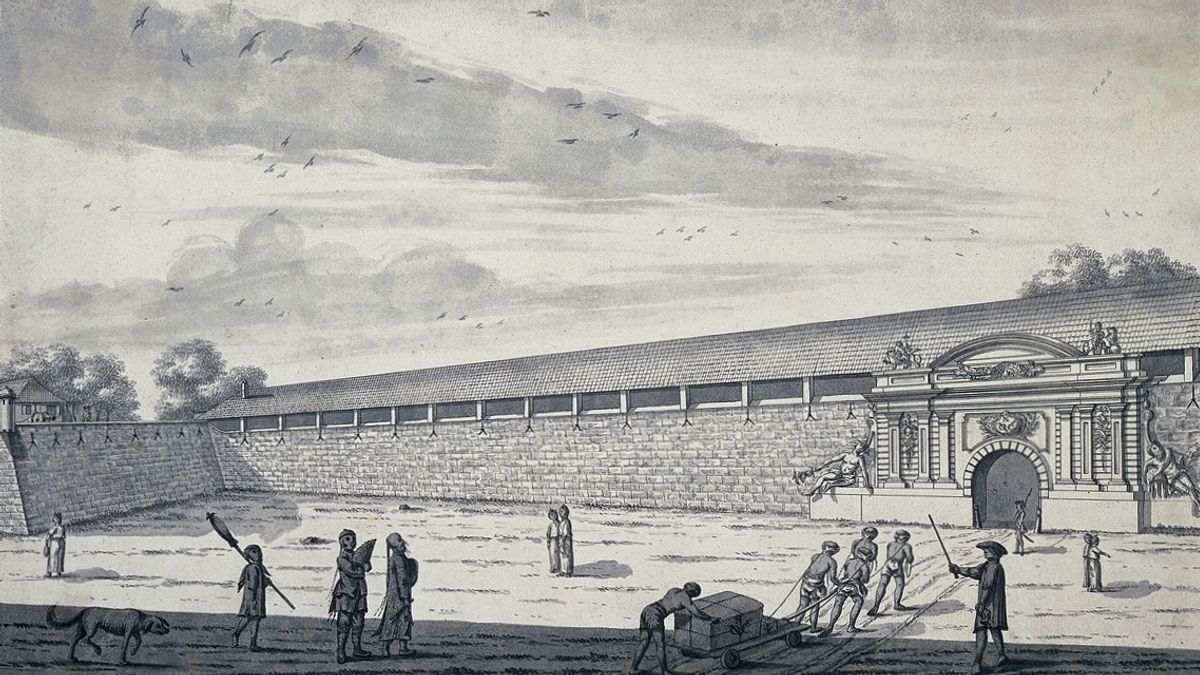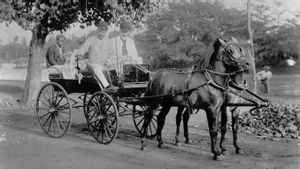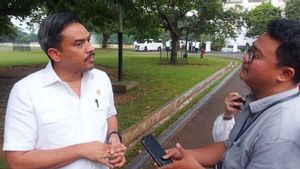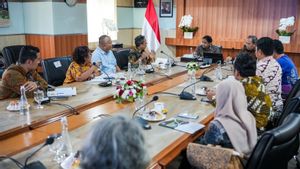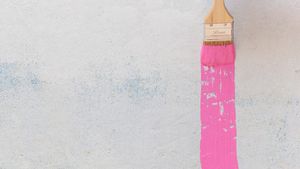JAKARTA - The conquest of Jayakarta (Jakarta) by the Dutch trading partnership, the VOC in 1619 was a milestone of colonialism in Indonesia. A thousand troops under the Governor-General of VOC Jan Pieterszoon Coen at that time made Jayakarta in ruins. Instantly Jayakarta was burned. On top of the ruins of this Coen built Kota Baru with a Batavia Castle. Historically, the building was recorded as a marker of Dutch rule in Indonesia.
At first, Kasteel Batavia was built because the previous Dutch fort was too small. These problems made Coen have to choose between two options, repair or rebuild. Then, with a passionate spirit of conquest, Coen chose the second option, namely to build the Batavia Castle not far from the VOC Shipyard near the Maritime Museum.
No kidding, the company commissioned Captain Willem Ysbrandszoon Bontekoe (1587-1657) to bring in material from the Thousand Islands. In his travel notes entitled Journael Ofte Gedenckwaerdige Beschrijvinghe Van De Oost-Indische Reyse Van Willem Ysbrantsz Bonte-Koe Van Hoorn (1648), Bontokoe described the details of the orders obtained from the company.
Based on his narrative, the Company gave him 40 laskar to transport and tie the stones with ropes so they could enter the boat. After that, the stones obtained from the Thousand Islands were immediately used as the main building material for building a shelter for the fort.

Quoted by Alwi Shahab in the book Time of the Netherlands, Drunk Born in Batavia (2013), Kasteel Batavia is equipped with four bastions which have the names of precious stones. Clockwise, the bastion starts from the northwest, namely Parel, Saphir, Robijn, and Diamant. Therefore, the residents of Batavia at that time recognized the area as the City of Diamonds.
“Within the castle, there were buildings such as the palace of the Governor-General of the VOC, the home of the Indies advisory council, the head of the accommodation section, the bookkeepers, the main merchants, the office of the employees, the mayor's house, the law office and the captains. There is also a kitchen and a bakery, a church, a house for fun, a house of healers and a pharmacy, ”wrote one of the important figures in the writing of Jakarta's history.
For the safety of the castle, the Company built a circular wall and wide trenches as a line of defense. The walls between the bastions are called Courtine or Gording. In the middle of the ring wall on the right there is also a gate facing the open sea called Water Poort vant Castell.
“Meanwhile, in the middle of the southern ring wall there is also a gate called the Land Poort vant Casteel which faces south (mainland). These two gates are the main doors in and out of Batavia Castle, ”he added.
Religious enforcement in kasteelThe presence of Kasteel Batavia made Coen famous with the slogan "Don't lose hope, don't forgive your opponents, because God is with us," which then made the casteel environment a medium for practicing Calvinism.
Coen, who was quite fanatical about religion, turned the entire castle into an isolation room, where only Europeans inhabited it. Meanwhile, the natives had left Batavia, the Javanese were prohibited from living, and the surrounding forest only contained wild animals.
The writer Goenawan Mohamad, in his writing in Tempo Magazine entitled JPC (2016) explained, as a form of religious enforcement, in 1642 Coen even wrote a prohibition for women to go outside the castle gate.
Equally, the slaves could not be sold to Jews, Muslims, or people without God. This image is further strengthened by the only dominance that can develop in the castle, the teachings of Calvinism.
As a result, regular assemblies were held at City Hall. Morning and evening prayers took place at Kasteel Batavia, and VOC officials and employees were obliged to fast before their merchant ship left.
"Nothing is more capable of uniting the hearts of people than the unity of faith and the right practice of religion," wrote Coen in his letter to VOC officials, Heeren Zeventien in Amsterdam.

Coen's steadfastness of faith in upholding Calvinism was also repeatedly tested. Coen's biggest test was none other than knowing the adultery scandal in Kasteel Batavia. No kidding, the adultery came from his own adopted son, Sara Specx, who was making love with the lowly soldier Pieter Cortenhoeff in Kasteel Batavia in 1629.
“One night, the young couple who were romantically drunk didn't realize the consequences of their actions. The poor girl who probably just got her period was in flagrante delicto (caught red-handed) making out with her lover at Coen's house. And the sexual violation case at Batavia Castle became a hot scandal at that time, "wrote Achmad Sunjayadi in a book entitled (Not) Tabu di Nusantara (2018).
We have reviewed this story in the article The Beheaded Head and the Love Tragedy Behind the Term Masher. Long story short, Coen who heard the information was immediately angry. Especially because of this incident, his track record as a model for European society in Batavia was tarnished.
The name Coen is known to be fragrant as a person who fights bad traits. The two adulterers were punished on June 6, 1629. Both were executed right in front of the City Hall (Stadhuisplein) courtyard in the Kota Tua area which is now known as Taman Fatahillah.
The young man was beheaded. Meanwhile, the girl was punished by being dragged towards the Stadhuisplein gate to witness her lover's punishment.
However, no matter how strong Coen thinks God is always with him, God shows another will. Batavia, which he celebrated, became nothing more than a failed project.
To borrow Goenawan Mohammad's words: la (Batavia) was built as a transplanted Dutch city, it was hoped that he would win straight Calvinist teachings. But urban humidity, outbreaks of malaria, and the human desire to live without fear of sin dismantled those designs. The castle is abandoned.
Later, Kasteel Batavia was also destroyed along with other buildings in Oud Batavia (Old Town) by the Governor General of the Dutch East Indies, Herman Willem Daendels (1809-1811) in 1809. According to Daendels, Oud Batavia was no longer habitable because of the development of disease outbreaks.
For this reason, Daendels moved the center of the Company government to the Nieuw Batavia area (New Batavia). Instead, the Company built a magnificent palace) named Het Witte Huis or the White Palace in Weltevreden, the area around Banteng Square.
The English, Chinese, Japanese, Arabic, and French versions are automatically generated by the AI. So there may still be inaccuracies in translating, please always see Indonesian as our main language. (system supported by DigitalSiber.id)
